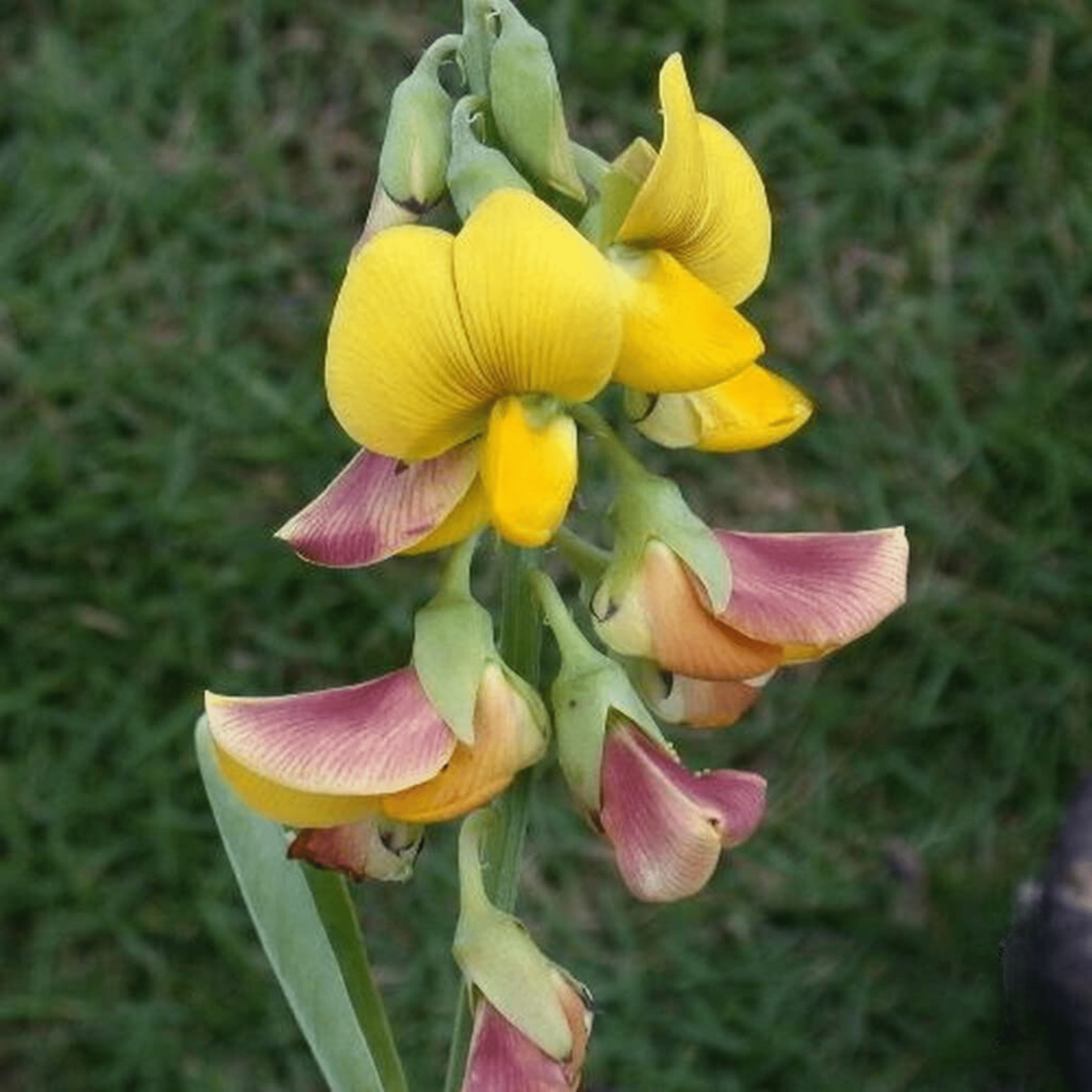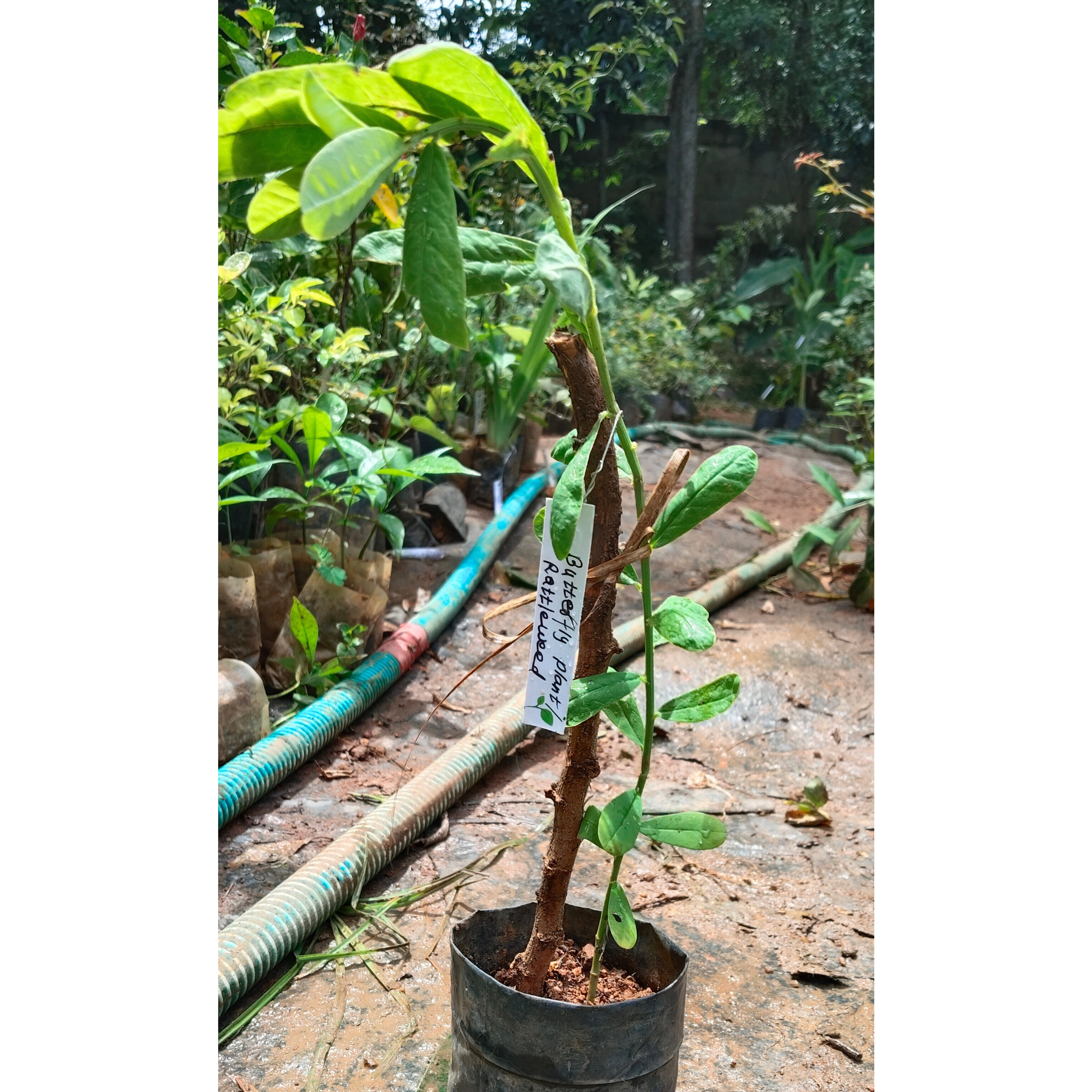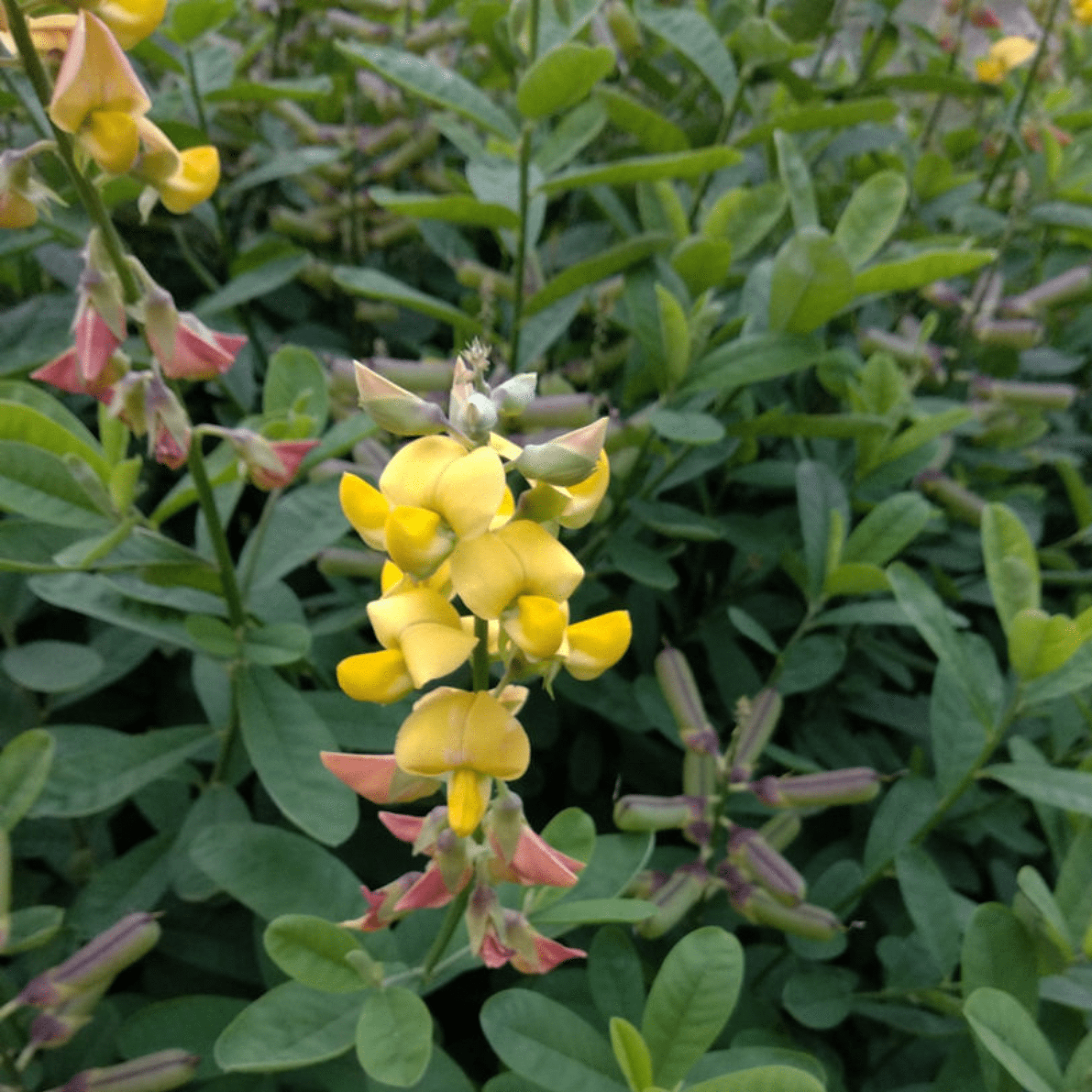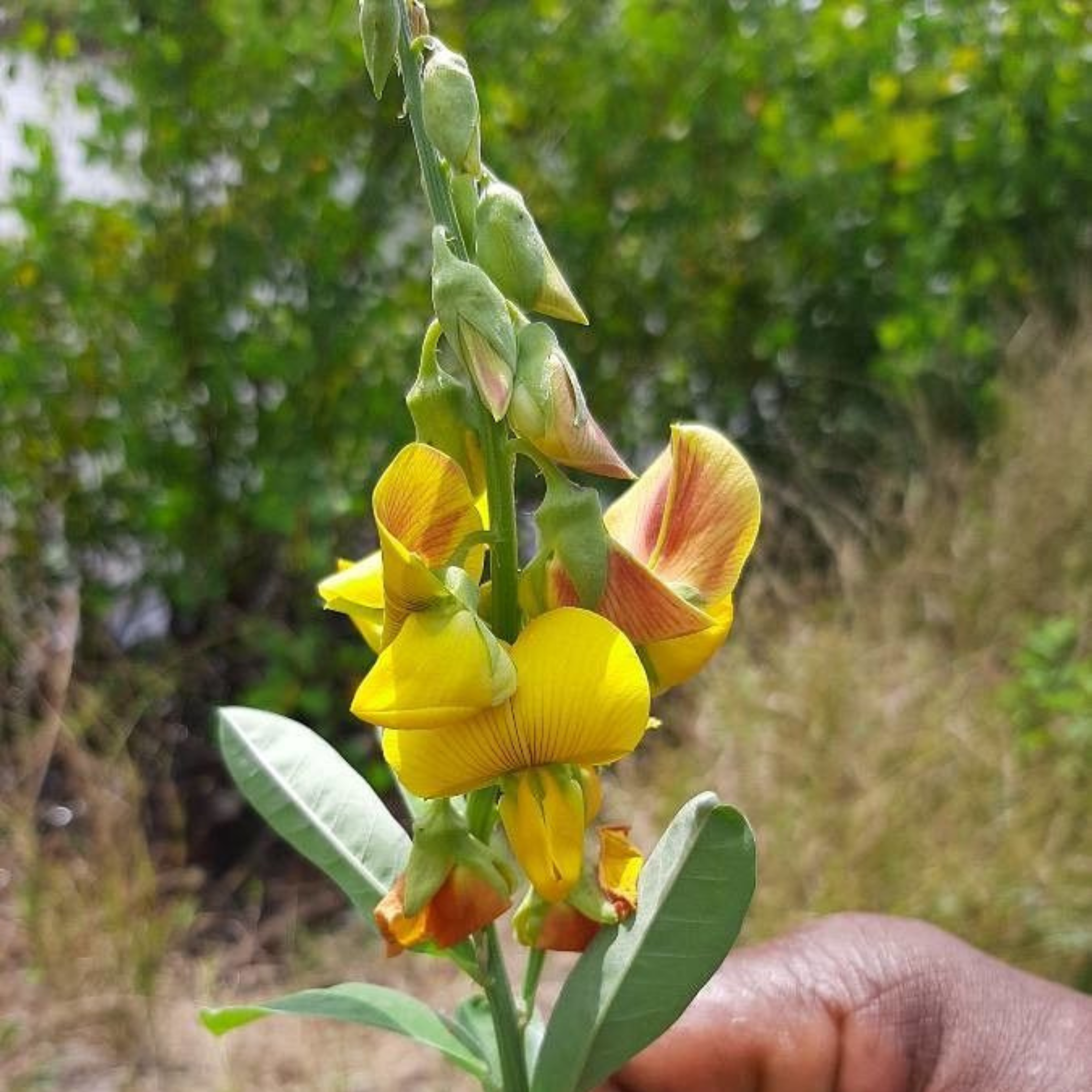



Product Description - Butterfly Plant / Rattleweed (Crotalaria retusa) Flowering Live Plant
| Plant Type | Well Rooted Plant, Bushy Plant |
| Plant Size | Approximately 2 ft |
| Blooming Time | 2 Months |
| Common Name | Butterfly Plant, Adanahiriya, Killukki Chedi, Kilukiluppai Plant, Rattleweed, Devil-bean, Shack Shack, Wedge-leaf Rattlepod |
| Botanical Name | Crotalaria retusa |
| Indoor / Outdoor | Outdoor |
| Sunlight Requirement | Full Sun |
| Maintenance Required | Easy |
Bring nature's beauty into your garden with Crotalaria Retusa, also known as the Butterfly Plant, Shack Shack, or Rattleweed. This low-maintenance, drought-tolerant plant is perfect for Indian climates and is beloved for its bright yellow flowers that attract butterflies, particularly tiger and crow butterflies.
Key Features
Native to Tropical Regions
This bushy annual Rattleweed plant thrives in warm climates, making it ideal for Indian conditions. It grows well in terraces, balconies, and gardens.
Height
The Crotalaria retusa plant can grow up to 4–6 feet when planted in the ground. In a pot, it typically reaches 3–4 feet.
Eye-Catching Flowers
The bright yellow flowers bloom in dense clusters, creating a lively, beautiful display. The flowers are a magnet for butterflies, enhancing the biodiversity in your garden.
Rattle Pods
One of the unique features of the Crotalaria retusa plant is its rattle pods—when mature, these cylindrical pods turn dark brown to black and produce a rattling sound when shaken.
Versatile Planting
Whether you’re planting in your balcony, terrace, or ground garden, the Butterfly Plant fits perfectly.
Care Guide
Soil
The Butterfly plant thrives in well-drained soil and can tolerate poor soil conditions. Ensure the soil dries out between waterings to prevent root rot.
Watering
Water sparingly, allowing the soil to dry between sessions. During hot weather, water more frequently, but avoid overwatering.
Sunlight
Prefers full sun but can tolerate partial shade. For optimal growth, place it in a location where it can receive bright, direct sunlight.
Temperature
Ideal temperature range is 15°C - 30°C. In extreme weather, you can use a shade net for protection.
Potting
Start young plants in pots or grow bags that are 6-10 inches in diameter, and as they mature, transplant them into larger pots that are 12- 14 inches in diameter. Ensure your pots have good drainage to avoid root rot.
Pruning & Fertilising
- Regular pruning encourages a bushier form and removes dead stems.
- You don't need to fertilise unless you notice yellowing leaves or poor growth. A balanced organic fertiliser like goat manure, panchagavya, or seaweed extract once a month during the growing season is sufficient.
Pest Control
While the butterfly plant is quite hardy, it may attract pests like plant bugs, legume pod borers, and white grubs. Use neem oil and organic pest controllers to protect your plant.
Benefits
Attracts Butterflies
Known as the Butterfly Plant for a reason, it contains Pyrrolizidine alkaloids, attracting butterflies like pea blue, plain tiger, common crow, and more. It’s also a larval host, making it essential for butterfly conservation.
Toxicity Warning
While beautiful, it’s important to note that Crotalaria retusa is toxic to livestock and can contaminate human food, so it’s best kept away from edible crops and animals.






